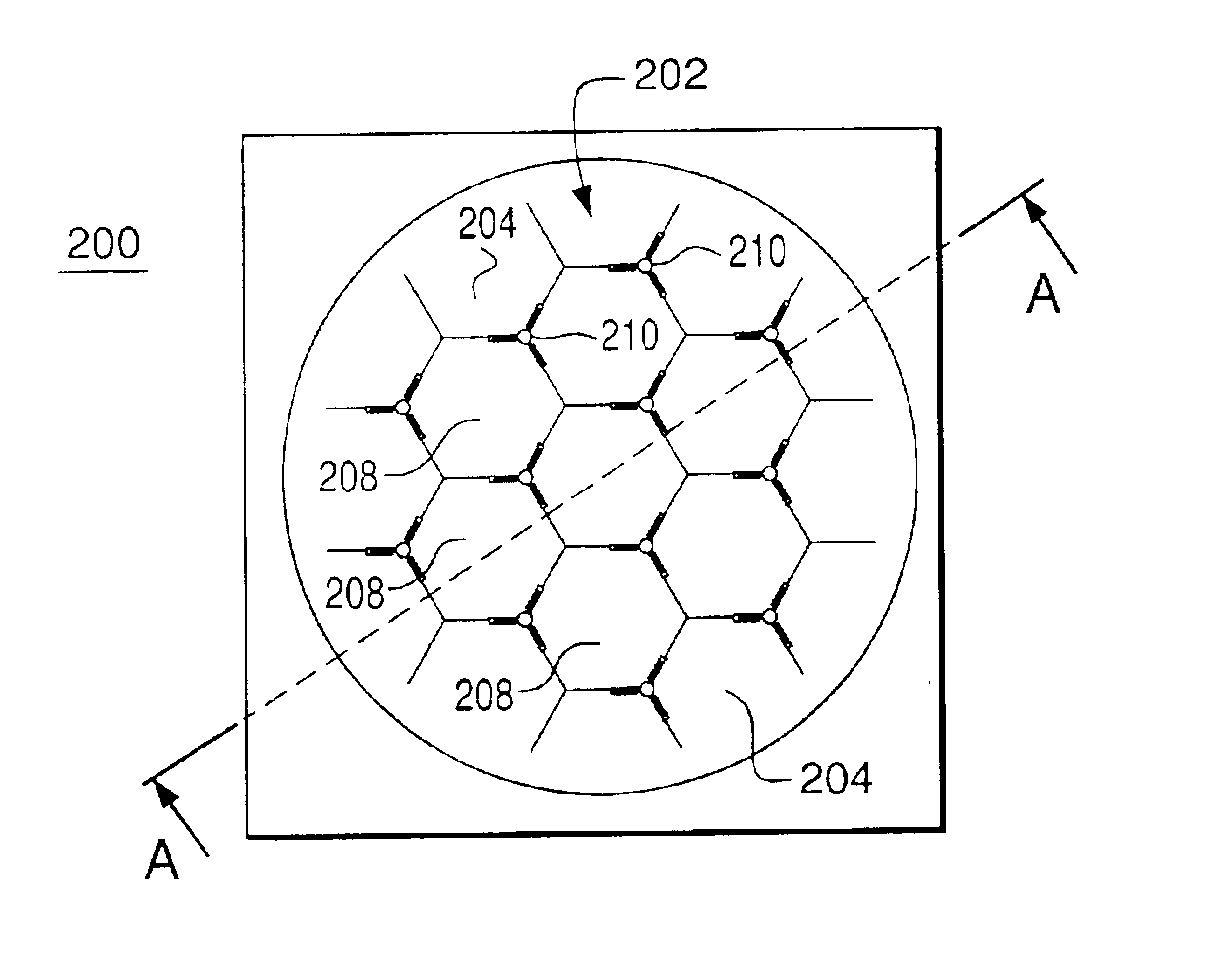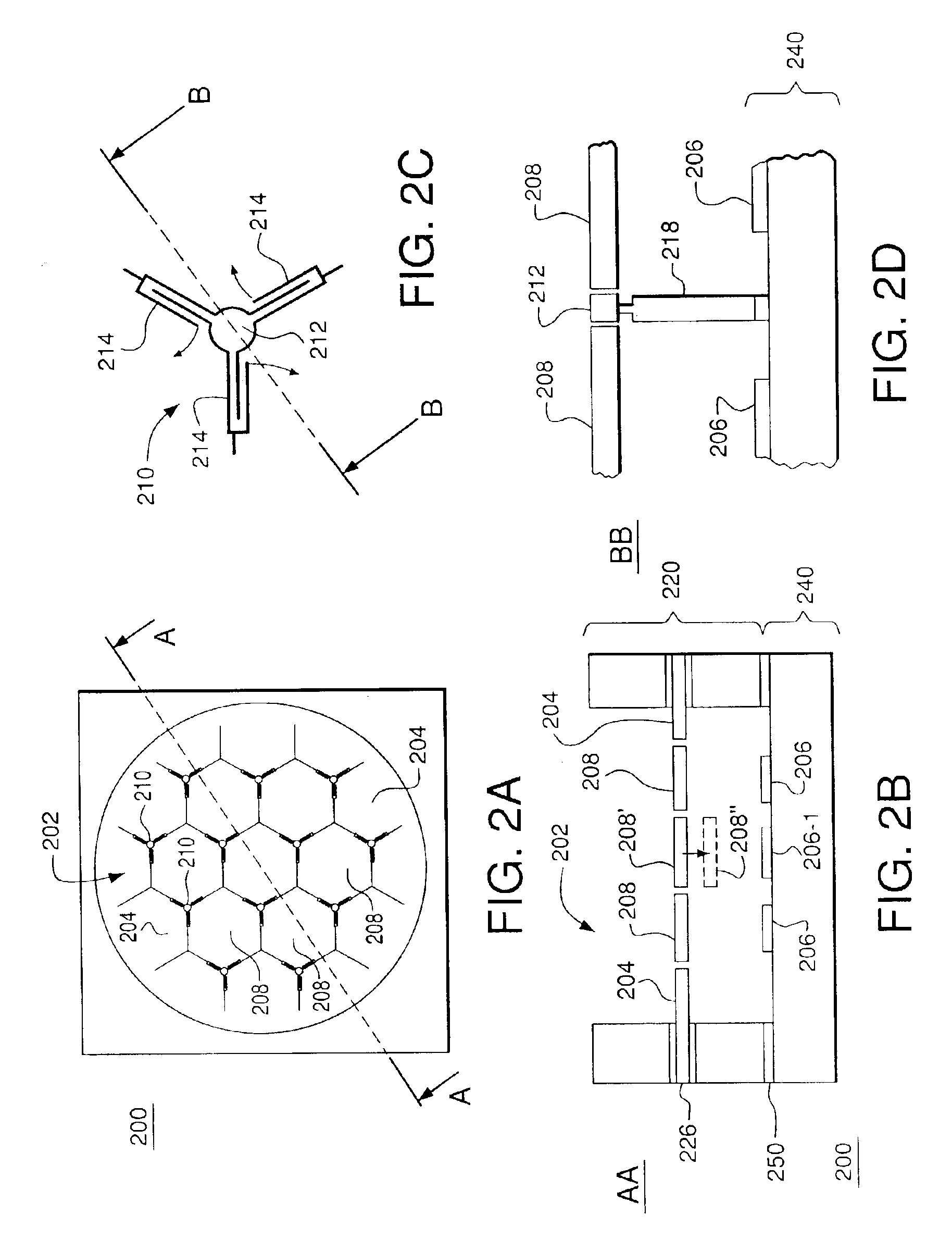Deformable segmented MEMS mirror
a segmented, mirror technology, applied in the field of adaptive optics, can solve the problems of reducing image quality, difficult control of the shape of the membrane, and corresponding limit of the range of wavefront distortions correctable with the membrane mirror, and achieve the effect of easy control
- Summary
- Abstract
- Description
- Claims
- Application Information
AI Technical Summary
Benefits of technology
Problems solved by technology
Method used
Image
Examples
Embodiment Construction
Reference herein to “one embodiment” or “an embodiment” means that a particular feature, structure, or characteristic described in connection with the embodiment can be included in at least one embodiment of the invention. The appearances of the phrase “in one embodiment” in various places in the specification are not necessarily all referring to the same embodiment, nor are separate or alternative embodiments mutually exclusive of other embodiments.
FIG. 1 schematically shows a deformable membrane mirror 100 of the prior art. Mirror 100 includes (i) a deformable membrane 102 mounted on a support structure 104 and (ii) an array of electrodes 106 located beneath membrane 102 on a substrate 140. Each electrode 106 can be individually biased by applying a voltage differential between that electrode and membrane 102 (typically at ground potential). For example, when electrode 106-1 is biased, an attractive electrostatic force (F) is exerted between that electrode and membrane 102 causing...
PUM
 Login to View More
Login to View More Abstract
Description
Claims
Application Information
 Login to View More
Login to View More - R&D
- Intellectual Property
- Life Sciences
- Materials
- Tech Scout
- Unparalleled Data Quality
- Higher Quality Content
- 60% Fewer Hallucinations
Browse by: Latest US Patents, China's latest patents, Technical Efficacy Thesaurus, Application Domain, Technology Topic, Popular Technical Reports.
© 2025 PatSnap. All rights reserved.Legal|Privacy policy|Modern Slavery Act Transparency Statement|Sitemap|About US| Contact US: help@patsnap.com



